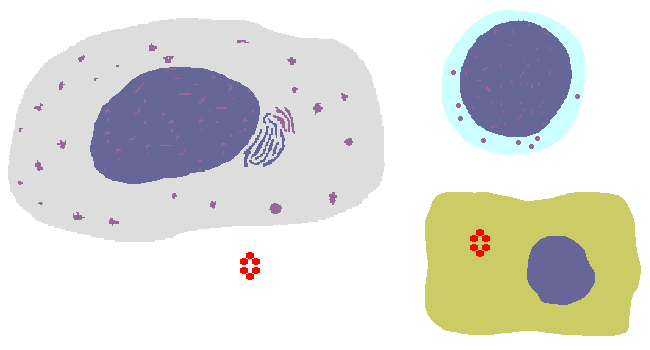



|
The interaction of a macrophage (an antigen presenting cell) on the left with an NK cell on the right is shown above. The key components of this interaction are labelled below. The macrophage phagocytizes a microbe, which stimulates the macrophage to release cytokines, including interleukin 12, which activates the NK cell. The NK cell then responds by seeking out an infected cell. The NK cell releases its cytoplasmic granules containing perforins that punch holes in the infected cell's membrane and caspases that activate apoptosis within the infected cell. The activated NK cell secretes the cytokine interferon-gamma which stimulates the macrophage to become more effective in destroying the phagocytized microbe. NK cells will not attack normal cells because of their expression of MHC class 1 antigens, which NK cells recognize. Many viral infections, however, turn off MHC expression, thus rendering such virally infected cells vulnerable to NK cell attack. |


 |